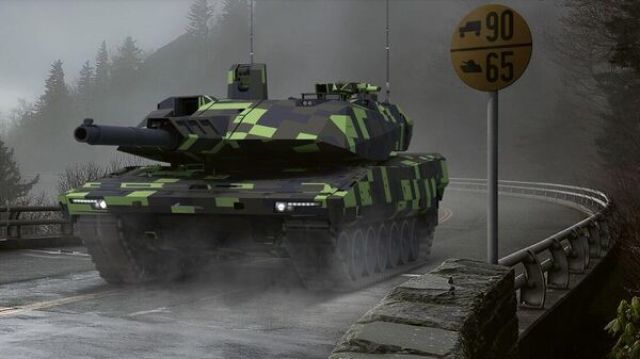MOSCOW, June 23 — RIA Novosti, Andrey Kotz.The fighting in Ukraine, according to analysts, has clearly shown that even in the XXI century, in the era of unmanned aircraft and satellites, the decisive role is still played by ground forces. The key to victory is the competent interaction of infantry with heavy armored vehicles and artillery. Therefore, the leading NATO countries have accelerated the development of new tanks. About what is known about these projects — in the material of RIA Novosti.
Tank with drones
The other day in Paris at the international exhibition Eurosatory 2022, Rneinmetall Corporation presented a prototype of a promising Bundeswehr KF51 battle tank. German gunsmiths named the new car "Panther" — in honor of the PzKpw V Panther of World War II.
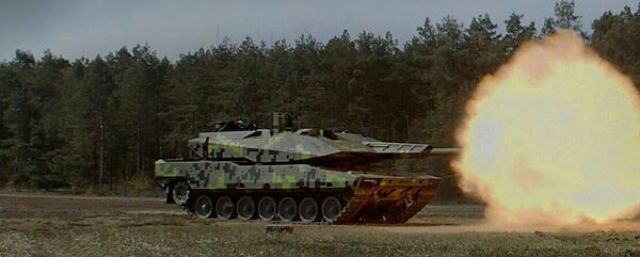
Promising German tank KF51 Panther
Image source: © Rheinmetall
The basis was the Leopard 2A7 OBT. "Panther" inherited from him the design of the tower and several elements of the hull. The protection is likely to be weaker due to the smaller mass - 59 tons against 66. Nevertheless, the developers assure that a promising machine will defeat any opponent in this weight category.
The main argument is a 130—millimeter Future Gun System (FGS) cannon with a built-in automatic loader (ammunition in the charger is 20 shells). Rheinmetall claims that such a weapon is 50 percent more powerful than the standard 120-millimeter, which NATO countries are armed with.
FGS can fire both armor-piercing-sub-caliber ammunition and high-explosive fragmentation, with the possibility of a programmable explosion in flight. The range is about five kilometers.
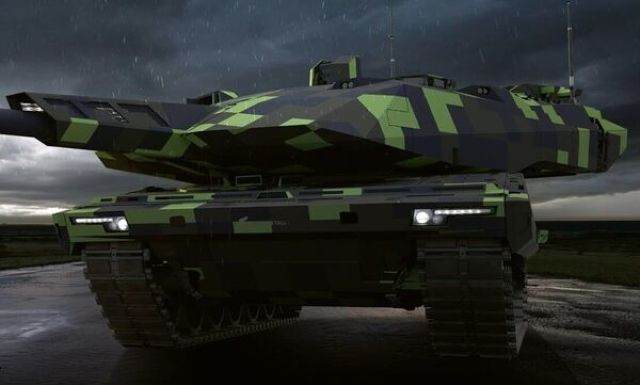
Promising German tank KF51 Panther
Image source: © Rheinmetall
Auxiliary armament is a 12.7 mm heavy machine gun paired with a cannon, as well as a 7.62 mm remote—controlled machine gun. In addition, HERO 120 Loitering barrage ammunition can be shot from the tower. Each of these kamikaze drones carries a high-explosive or cumulative warhead weighing 3.5 kilograms. The range is up to 40 kilometers, which will allow the KF51 crew to destroy targets outside the line of sight. Also included are two reconnaissance quadrocopters in special compartments on the roof.
Little is known about the booking of the tank yet. There is not only passive, but also dynamic armor, as well as an active protection complex (Advanced Modular Armor Protection, AMAP) — a modular design of 600 kilograms, firing ammunition with controlled detonation.
Two groups of sensors determine the trajectory, speed and type of the attacking projectile. What to do with the goal is decided by the on-board computer.
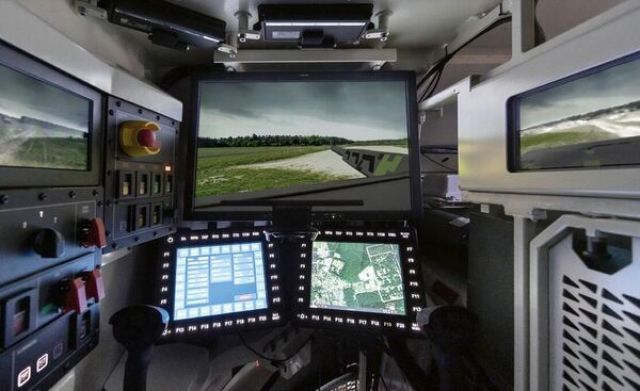
Promising German tank KF51 Panther
Image source: © Rheinmetall
Of course, the Panther is stuffed with the most modern electronics. For example, a multi—channel sight with a thermal imaging channel and a laser rangefinder in the frontal part of the tower - like the Leopard-2. For the tank commander — a panoramic surveillance device that helps to detect and identify targets, to fire. They also implemented the "hunter — shooter" principle, when one crew member marks a target and another hits it.
Weighty caliber
The French are not far behind the Germans. Nexter Concern showed a promising 140-millimeter ASCALON cannon for the "tank of the future" EMBT (Enhanced Main Battle Tank) of joint Franco-German development.
The gun has already been tested on the Leclerc tank. The novelty has a much larger projectile chamber than its predecessors. The pressure of the powder gases has also been optimized, which will increase the service life.
The development is planned to be completed by 2023. ASCALON is lighter than the current 120-millimeter guns with barrels of 55 calibers — about three tons. The gun will receive sub-caliber ammunition with an optimal ratio of length to diameter of the tungsten core of the projectile. In addition, it will be able to fire guided ammunition of the NLOS class from closed positions.
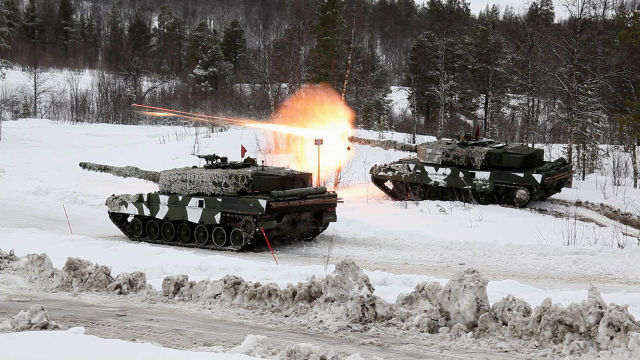
Tanks of the Norwegian Armed Forces during joint NATO exercises
Image source: © Flickr / U.S. Department of Defense
A prototype of a promising EMBT tank with a standard 120-millimeter gun was also demonstrated. No details were reported, but they explained that the car was made on the chassis of the same German Leopard-2. The turret and the automatic loader are like the French "Leclerc". The engine power is 1500 horsepower. The maximum speed on the highway is 65 kilometers per hour. The fuel reserve is 460 kilometers. Combat weight — 61,500 kilograms.
Updated Veteran
In mid-June, the American company General Dynamics Land Systems published the project of the Abrams Next Gen tank ("Abrams" of the next generation). There are no technical details yet, the prototype will be officially presented in the fall.
In a short presentation, it is reported that the tank will receive a hybrid power plant. According to the developers, "the advantages of such a system on various types of military equipment are the ability to work in an extremely quiet, fully electric mode." The new Abrams will be equipped with a remotely controlled Kongsberg Protector RS6 combat module capable of hitting both low-flying aircraft and helicopters, as well as drones.
The main caliber is the same — 120 millimeters. However, the regular cannon of the M256 tank will most likely be changed to the promising XM360 with automatic loading. In general, there is no question of a radical restructuring of the existing tank. The overall architecture and layout are the same. Apparently, they will modernize the booking of the hull and tower, as well as introduce active protection. Under the realities of modern war.
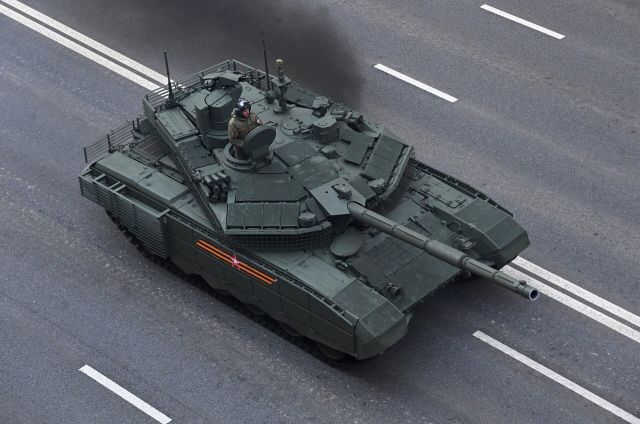
T-90M "Breakthrough" tank
Image source: © RIA Novosti / Evgeny Odinokov
“The NATO countries did not just take care of the calibres of tank guns," explains military expert Alexei Leonkov. — Firstly, they studied in Syria our most modern serial T-90, which fell into the hands of the militants. And they came to disappointing conclusions for themselves: a Russian tank cannot be guaranteed to hit with a 120-millimeter projectile. Secondly, the ammunition of the T-90 and the newer T-14 Armata includes armor-piercing feathered sub-caliber shells (BOPS) that penetrate up to a meter of armor. There is no such effective ammunition in the West. Therefore, they decided to deal with the caliber of guns there. At the same time, our T-14 was originally created for 152 mm caliber. It is a matter of several months to put this gun on serial samples."
The analyst believes that there is nothing fundamentally new in the tanks presented by NATO countries. The developers limited themselves to upgrading existing platforms that are obsolete. Therefore, it is not necessary to talk about a real breakthrough and an "effective response to the Russian Armata."
Andrey Kotz
